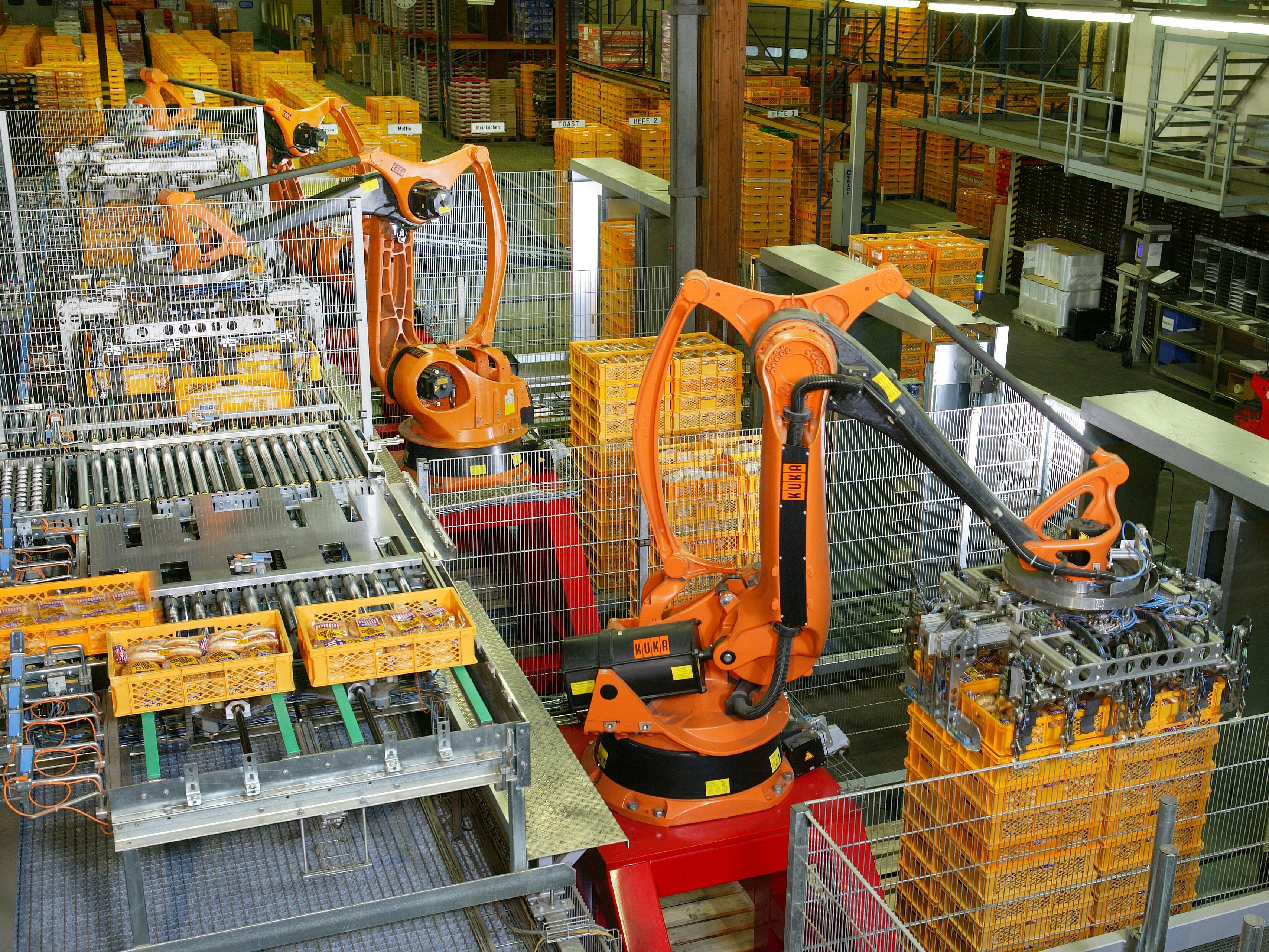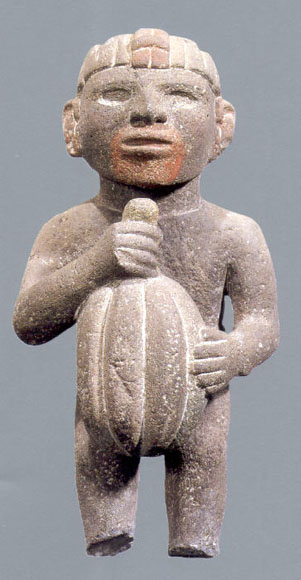|
Sam Porcello
Samuel J. Porcello (May 23, 1935Samuel J Porcello in Toms River, New Jersey; ''U.S. Public Records Index'' – May 12, 2012) was an American food scientist who worked at Nabisco for 34 years. He is particularly noted for his work on the modern Oreo cookie. Porcello held five patents directly related to the Oreo. In particular, Porcello was the inventor of the white Oreo cookie creme-filling. His work earned him the nickname, "Mr. Oreo." Early life Porcello was born and raised in Newark, New Jersey. He also lived in Wayne, New Jersey. He and his family moved to Toms River, New Jersey, in 1974, where he resided for the rest of his life. Porcello initially worked as a teacher for a short time during his early career. He then worked for the former The Charms Company, a candy manufacturer. He was nearly hired by a major cosmetics company, but his candidacy ended when the company learned that Porcello was color blind. Career Porcello joined Nabisco after his rejection by the ... [...More Info...] [...Related Items...] OR: [Wikipedia] [Google] [Baidu] |
Food Scientist
Food science is the basic science and applied science of food; its scope starts at overlap with agricultural science and nutritional science and leads through the scientific aspects of food safety and food processing, informing the development of food technology. Food science brings together multiple scientific disciplines. It incorporates concepts from fields such as chemistry, physics, physiology, microbiology, and biochemistry. Food technology incorporates concepts from chemical engineering, for example. Activities of food scientists include the development of new food products, design of processes to produce these foods, choice of packaging materials, shelf-life studies, sensory evaluation of products using survey panels or potential consumers, as well as microbiological and chemical testing. Food scientists may study more fundamental phenomena that are directly linked to the production of food products and its properties. Definition The Institute of Food Techn ... [...More Info...] [...Related Items...] OR: [Wikipedia] [Google] [Baidu] |
Color Blind
Color blindness or color vision deficiency (CVD) is the decreased ability to see color or differences in color. It can impair tasks such as selecting ripe fruit, choosing clothing, and reading traffic lights. Color blindness may make some academic activities more difficult. However, issues are generally minor, and the colorblind automatically develop adaptations and coping mechanisms. People with total color blindness (achromatopsia) may also be uncomfortable in bright environments and have decreased visual acuity. The most common cause of color blindness is an inherited problem or variation in the functionality of one or more of the three classes of cone cells in the retina, which mediate color vision. The most common form is caused by a genetic disorder called congenital red–green color blindness. Males are more likely to be color blind than females, because the genes responsible for the most common forms of color blindness are on the X chromosome. Non-color-blind f ... [...More Info...] [...Related Items...] OR: [Wikipedia] [Google] [Baidu] |
ACDI/VOCA
ACDI/VOCA is an international development nonprofit organization based in Washington, D.C., United States, that fosters broad-based economic growth, increased living standards, and community development. Incorporated in 1965, ACDI/VOCA's mission is to promote economic opportunities for cooperatives, enterprises and communities through the innovative application of sound business practice. ACDI/VOCA has worked in 148 countries since 1963. Total revenues for ACDI/VOCA and its affiliates are approximately $154 million. ACDI/VOCA employs approximately 1,270 people in the US and overseas. History Agricultural Cooperative Development International ACDI (Agricultural Cooperative Development International) was formed in 1966 by major U.S. farm cooperatives. Its principal objective was to provide expertise and support to cooperative enterprises in developing countries. In 1967, ACDI helped found Indian Farmers Fertiliser Cooperative (IFFCO), India's largest fertilizer company, re- ... [...More Info...] [...Related Items...] OR: [Wikipedia] [Google] [Baidu] |
Milk
Milk is a white liquid food produced by the mammary glands of mammals. It is the primary source of nutrition for young mammals (including breastfed human infants) before they are able to digest solid food. Immune factors and immune-modulating components in milk contribute to milk immunity. Early- lactation milk, which is called colostrum, contains antibodies that strengthen the immune system, and thus reduces the risk of many diseases. Milk contains many nutrients, including protein and lactose. As an agricultural product, dairy milk is collected from farm animals. In 2011, dairy farms produced around of milk from 260 million dairy cows. India is the world's largest producer of milk and the leading exporter of skimmed milk powder, but it exports few other milk products. Because there is an ever-increasing demand for dairy products within India, it could eventually become a net importer of dairy products. New Zealand, Germany and the Netherlands are the largest export ... [...More Info...] [...Related Items...] OR: [Wikipedia] [Google] [Baidu] |
SnackWells
SnackWell's was a brand of foods introduced in 1992. Its products used to include fat-free cookies of a variety of flavors including creme, shortbread, and devil's food cake. Previously a Nabisco brand, it was later sold to Back to Nature Foods. In 2022, B&G Foods discontinued the SnackWell's brand. History Under Nabisco SnackWell's products were marketed as fat-free and thus healthier snacks, as the U.S. dietary guidelines of the early 1990s advocated a reduction in the consumption of fats. In an ironic and unintended consequence, SnackWell's products were an example of foods that had a higher carbohydrate count and were later cited as a likely contributor to the obesity epidemic of the 1990s and beyond. The Snackwell Effect was named for the tendency to consume greater quantities of an item or service deemed morally superior, such as a putatively healthier cookie, or more energy-efficient lighting. SnackWells were developed by Nabisco's principal food scientist, Sam Porc ... [...More Info...] [...Related Items...] OR: [Wikipedia] [Google] [Baidu] |
Europe
Europe is a large peninsula conventionally considered a continent in its own right because of its great physical size and the weight of its history and traditions. Europe is also considered a subcontinent of Eurasia and it is located entirely in the Northern Hemisphere and mostly in the Eastern Hemisphere. Comprising the westernmost peninsulas of Eurasia, it shares the continental landmass of Afro-Eurasia with both Africa and Asia. It is bordered by the Arctic Ocean to the north, the Atlantic Ocean to the west, the Mediterranean Sea to the south and Asia to the east. Europe is commonly considered to be separated from Asia by the watershed of the Ural Mountains, the Ural River, the Caspian Sea, the Greater Caucasus, the Black Sea and the waterways of the Turkish Straits. "Europe" (pp. 68–69); "Asia" (pp. 90–91): "A commonly accepted division between Asia and Europe ... is formed by the Ural Mountains, Ural River, Caspian Sea, Caucasus Mountains, and the Blac ... [...More Info...] [...Related Items...] OR: [Wikipedia] [Google] [Baidu] |
White Chocolate
White chocolate is a confectionery typically made of sugar, milk, and cocoa butter. It is pale ivory colored, and lacks many of the compounds found in milk and dark chocolates. It is solid at room temperature because the melting point of cocoa butter, the only cocoa bean component of white, is . History In 1937, the white chocolate Galak was launched in Europe by the Swiss company Nestlé. Other companies developed their own formulas, such as that developed by Kuno Baedeker for the Merckens Chocolate Company in 1945. From about 1948 until the 1990s, Nestlé produced a white chocolate bar with almond pieces, Alpine White, for markets in the United States and Canada. Hershey began mass production of white Hershey's Kisses in the 1990s, a product that diversified during the early 21st century to include a chocolate white-dark swirl Kiss called the ''Hug''. Composition White chocolate does not contain cocoa solids, the primary non-fat constituent of conventional chocolate ... [...More Info...] [...Related Items...] OR: [Wikipedia] [Google] [Baidu] |
Product Line
Product may refer to: Business * Product (business), an item that serves as a solution to a specific consumer problem. * Product (project management), a deliverable or set of deliverables that contribute to a business solution Mathematics * Product (mathematics) Algebra * Direct product Set theory * Cartesian product of sets Group theory * Direct product of groups * Semidirect product * Product of group subsets * Wreath product * Free product * Zappa–Szép product (or knit product), a generalization of the direct and semidirect products Ring theory * Product of rings * Ideal operations, for product of ideals Linear algebra * Scalar multiplication * Matrix multiplication * Inner product, on an inner product space * Exterior product or wedge product * Multiplication of vectors: ** Dot product ** Cross product ** Seven-dimensional cross product ** Triple product, in vector calculus * Tensor product Topology * Product topology Algebraic topology * Cap product ... [...More Info...] [...Related Items...] OR: [Wikipedia] [Google] [Baidu] |
Cocoa Bean
The cocoa bean (technically cocoa seed) or simply cocoa (), also called the cacao bean (technically cacao seed) or cacao (), is the dried and fully fermented seed of '' Theobroma cacao'', from which cocoa solids (a mixture of nonfat substances) and cocoa butter (the fat) can be extracted. Cocoa beans are the basis of chocolate, and Mesoamerican foods including tejate, an indigenous Mexican drink that also includes maize, and pinolillo, a similar Nicaraguan drink made from a cornmeal & cocoa powder. Etymology The word ''cocoa'' comes from the Spanish word , which is derived from the Nahuatl word . The Nahuatl word, in turn, ultimately derives from the reconstructed Proto-Mixe–Zoquean word ''kakawa''. Used on its own, the term ''cocoa'' may also mean: * Hot cocoa, the drink more known as '' hot chocolate'' Terms derived from ''cocoa'' include: * Cocoa paste, ground cocoa beans: the mass is melted and separated into: ** Cocoa butter, a pale, yellow, edible fa ... [...More Info...] [...Related Items...] OR: [Wikipedia] [Google] [Baidu] |
Snack
A snack is a small portion of food generally eaten between meals. Snacks come in a variety of forms including packaged snack foods and other processed foods, as well as items made from fresh ingredients at home. Traditionally, snacks are prepared from ingredients commonly available at home without a great deal of preparation. Often cold cuts, fruits, leftovers, nuts, sandwiches, and sweets are used as snacks. With the spread of convenience stores, packaged snack foods became a significant business. Snack foods are typically designed to be portable, quick, and satisfying. Processed snack foods, as one form of convenience food, are designed to be less perishable, more durable, and more portable than prepared foods. They often contain substantial amounts of sweeteners, preservatives, and appealing ingredients such as chocolate, peanuts, and specially-designed flavors (such as flavored potato chips). A snack eaten shortly before going to bed or during the night ... [...More Info...] [...Related Items...] OR: [Wikipedia] [Google] [Baidu] |
Research And Development
Research and development (R&D or R+D), known in Europe as research and technological development (RTD), is the set of innovative activities undertaken by corporations or governments in developing new services or products, and improving existing ones. Research and development constitutes the first stage of development of a potential new service or the production process. R&D activities differ from institution to institution, with two primary models of an R&D department either staffed by engineers and tasked with directly developing new products, or staffed with industrial scientists and tasked with applied research in scientific or technological fields, which may facilitate future product development. R&D differs from the vast majority of corporate activities in that it is not intended to yield immediate profit, and generally carries greater risk and an uncertain return on investment. However R&D is crucial for acquiring larger shares of the market through the marketisation ... [...More Info...] [...Related Items...] OR: [Wikipedia] [Google] [Baidu] |


.jpg)

